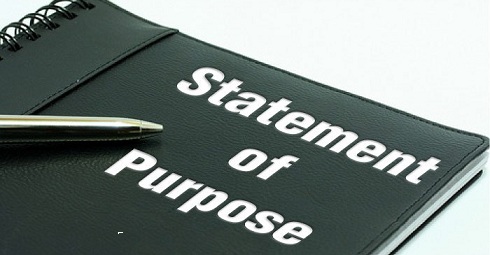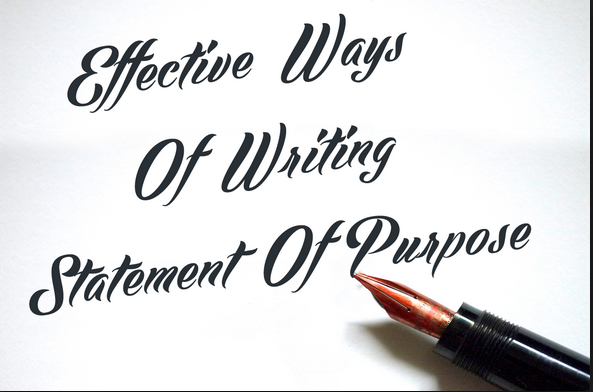There’s literally no one answer to the question “What is a good TOEFL score?” But have no fear. In this article, we’ll give you all the information you need in order to measure the value of your score on the exam.
Will Your TOEFL Scores be Any Good?
Whether you’ve already taken your TOEFL test (congratulations!) or you’re planning to take the exam, and you are likely wondering what a good score is. You’re not alone. Waiting the 10 days before your TOEFL results are posted online can be frustrating, but it can be even more frustrating not to know how to interpret your results!
However, unlike most other tests we take, you can’t pass or fail the TOEFL. No TOEFL score range or individual TOEFL score can really be said to be “good” or “bad”, just as no level of English is inherently “good” or “bad”—it all depends on what kind of language you use and what you need it for. So in this post, we’ll look at a few ways to answer the question, “What is a good TOEFL score?”
What is a Good TOEFL Score? Sometimes, the Minimum Required Score is Good Enough
Fortunately, many universities take the guesswork out by stating exactly what score you need to qualify for their programs. At quite a few schools, you can just look up the score you need, then take a TOEFL practice test to see where you currently are.
Of course, the minimum score can still differ a lot from school-to-school. Some schools require a score as low as 70 points, and others as high as 110. From a practical standpoint, the score required by the school you’re interested in should be considered a “good” score.
If, after taking a TOEFL practice test, you discover that your TOEFL score does not meet the minimum score requirement for your school, you can use Magoosh TOEFL Prep to improve your skills and increase your score. (Our free trial is a good place to start.)
Now, if you’re taking the SAT or GRE, you may have noticed the culture of scraping up as many points as possible; it’s not uncommon for people to spend months and months studying and then take the test multiple times over a period of six months or a year. For many exams, there’s absolutely nothing wrong with this, since even a fairly small increase in score can give you the competitive edge that gets you admitted or wins the scholarship that allows you to attend the school of your dreams.
The TOEFL, however, is usually a little different… at most schools, at least. More often than not, if a school states a score, then the office of admissions has determined that that score is what’s necessary to perform well in that school’s curriculum. So as long as you meet the requirement, your score probably won’t play much of a role in your admission or rejection.
Let’s say you were sick on the day of your test, and you didn’t perform your best. You scored a 90, but you think you should have scored a 100. If your program only requires an 80, then you probably don’t need to take the test again. Instead, it’s likely better to focus on other parts of your application that the admissions department is more interested in, like your essays, interviews, and portfolios.
…But for Certain On-Campus Work, the Minimum TOEFL Score is Not Enough
Sometimes a school will offer special benefits or opportunities if your TOEFL score exceeds the minimum. For example, if you are trying for admission to a top graduate school, the minimum score might be 90. However, in order to get a TA (a teaching assistantship), your minimum speaking score might be 26, or you might need a 100 on the TOEFL overall. If you are hoping for special on-campus work opportunities, check to see if there are separate, higher TOEFL requirements.
When it comes to TOEFL scores and conditional acceptance, higher scores mean fewer ESL classes. If your TOEFL score is at the bottom of a conditional acceptance range, you may have to take a full year of ESL classes, maybe more. However, if you have a top conditional TOEFL score, there’s a good chance you’ll study English for just one semester before beginning your regular degree. To give one example, the University of Iowa has a TOEFL score range of 54 to 79 for conditionally accepted students. If you enter their conditional acceptance program with a TOEFL that’s in the upper 70s, you can probably get into your regular degree courses in less than a year.
And there are still other universities that set a score range for fully accepted students. This is less common. But you will see ranges, rather than just a set minimum TOEFL score, at some highly competitive universities.
For instance, the University of Illinois recommends a TOEFL score range of 102-110. Obviously, the closer an applicant is to 110, the better. Similarly, prestigious schools such as Harvard, Princeton, Stanford, etc… may prefer to see your score fall into a TOEFL score range that’s above their minimum.
Final Word on University TOEFL Scores: Always do Your Research!
Ultimately, you need to research the exact TOEFL expectations at your school. And when it comes to researching schools, make sure you get the most accurate, up-to-date information.
If possible, email or call your school admissions office to confirm any score information you see on their website. Ideally, of course, the information on the website will be up-to-date. But sometimes it won’t be. So it never hurts to double-check. And remember, TOEFL requirements sometimes vary, depending on the major or program you apply to. So double-check department-specific TOEFL requirements as well!
What is a Good TOEFL iBT Score, According to ETS?
ETS, the company that makes the TOEFL, also sets official levels for how good your TOEFL iBT score is.
When you get your TOEFL scores, they will be accompanied by a document called “performance feedback.” This document will contain a summary of your general level in each section/skill of the TOEFL. There will be separate descriptions of your performance for TOEFL Reading, Listening, Speaking, and Writing.
Performance Levels for TOEFL Reading and Listening
For TOEFL Reading and TOEFL Listening, ETS’s performance feedback breaks the score into 3 TOEFL score range levels: high, intermediate, and low. You can use this information to figure out how good your score is in a very general sense.
Here is a short summary of the three official ETS “performance feedback” levels for TOEFL Reading and Listening:
- HIGH: At the high level, you have a chance to get into the best schools that accept the exam. And the very top high scores give you a chance the very top schools, schools that are Ivy League or similarly good.
- INTERMEDIATE: ETS’s intermediate TOEFL scores will meet the requirements of most schools. Intermediate scores are good enough to get into the schools I mentioned earlier in this article: the ones that only need you to meet their minimum score.
- LOW: As you probably guessed, low TOEFL scores are not-so-good. At the upper end of ETS’s “low” score range, you can probably get into conditional acceptance programs. However, if your score is low by ETS standards, you should consider a retake. Very few universities accept TOEFL scores in this bottom range.
Performance Levels for TOEFL Speaking
TOEFL performance feedback reports give four different levels for TOEFL Speaking: Good, Fair, Limited, and Weak. Here are short descriptions of these four levels:
- GOOD: “Good” TOEFL Speaking performance will get you into upper-mid-ranked schools and top schools. Obviously, the closer you are to the maximum score of 30, the better. Perfect or near-perfect scores give test-takers a great shot at the Ivies.
- FAIR: If your TOEFL Speaking performance is rated as “Fair,” you will be able to get into most mid-ranked universities. Believe it or not, fair TOEFL speaking scores can sometimes also get students into top graduate programs. Certain graduate programs, especially ones in the STEM fields, are willing to accept talented applicants at this lower level of TOEFL Speaking.
- LIMITED: At this level, test-takers may be offered conditional acceptance into some schools. Full acceptance into a degree program is very unlikely at this level.
- WEAK: The name of this Speaking performance level says it all. If your TOEFL performance feedback indicates that you’re weak in Speaking, you may be eligible for conditional acceptance at some schools. However, full acceptance into a university degree program is very unlikely at this performance level.
Performance Levels for TOEFL Writing
Like TOEFL Reading and Speaking, TOEFL Writing is divided into three levels in ETS’s feedback performance document. However, these TOEFL Writing performance levels don’t have the same names as the levels for Reading and Listening. Instead, the three TOEFL Writing performance levels are Good, Fair, and Limited. Here is what a score each performance levels means:
- GOOD: Good TOEFL Writing performance means good chances at getting into a good school. Exactly how good of a school? Like the other top performance levels, that depends on how close your score is to the perfect 30 score. Expect acceptance into upper-mid-ranked schools at the very least, with the possibility of top school acceptance in some cases.
- FAIR: If your TOEFL Writing performance is fair, you still have a good shot at mid-ranked schools. You may also be able to get into top schools, particularly for STEM graduate programs. Conditional acceptance at upper mid-level and top-ranked schools is also a distinct possibility.
- LIMITED: Limited TOEFL Writing abilities equal limited chances of acceptance into school. If your TOEFL score indicates limited Writing ability, consider conditional acceptance programs. You may also have a chance of full acceptance at mid and low-ranked schools, provided the rest of your TOEFL sections have higher performance levels.
TOEFL Performance Levels and Scores
So what’s the score range for these different performance levels? I’m glad you asked. Magoosh has compiled ETS’s performance feedback score ranges and levels into a hand chart. Check out the table below!
TOEFL Results and Levels
| SECTION | LEVEL | SCORE RANGE |
|---|---|---|
| Reading or Listening | High | 22-30 |
| Intermediate | 15-21 | |
| Low | 0-14 | |
| Speaking | Good | 26-30 |
| Fair | 18-25 | |
| Limited | 10-17 | |
| Weak | 0-9 | |
| Writing | Good | 24-30 |
| Fair | 17-23 | |
| Limited | 1-16 |
More Details From the Official TOEFL Website
The chart above gives a very basic look at ETS’s TOEFL score range levels. For more detailed information, you can read the official Guide to Understanding TOEFL Scores.
This PDF gives detailed descriptions of the score levels for Reading, Listening, Speaking, and Writing. Note that the PDF also shows raw scores for the score levels in Speaking and Writing. In this post, Magoosh’s chart shows final scaled scores only.My Whole Application is Great! What is a Good TOEFL Score for Me?
When asking “What is a good TOEFL score?” consider the quality of the rest of your application. If you have a very strong admissions essay, an excellent past academic record, recent coursework that was taught in English, etc., a lower TOEFL score may still be seen as “good” by schools. Or at least, a low TOEFL score can be seen as good enough.
In fact, if you have a TOEFL score that’s just below the minimum, but the rest of your application materials are excellent, you should ask your school if you can still be considered for acceptance. Many schools will say yes. (There are also many schools that won’t be flexible, of course.)
What is a Good TOEFL Score, in Terms of Percentiles?
Then there’s the matter of TOEFL percentiles. Your percentile shows how you did in comparison with other test takers. The higher the percentile, the better. A 90th percentile TOEFL score means you scored higher than 90% of the other test takers. If you can fall into that percentile, you have a pretty good TOEFL score. And more basically, the higher above the 50th percentile you go, the better off you are.
Now, here’s where percentiles get interesting: ETS measures percentiles based on the demographic that you’re in. This means you compare your TOEFL score to other test-takers who share your language, come from your home country, share your gender, or have the same level of education that you do.
Let’s say that your TOEFL score is in the 90th percentile for your country. This makes your score a good one, if you’re applying to English language degree programs in your own country.
If you’re from a very big nation, your national TOEFL percentile influences global percentiles a lot. So a high TOEFL percentile in your home country may be good by the standards of universities around the world. “Big nation” high percentiles are especially valuable for university admissions in the English-Speaking world. Many American, British, Canadian, Australian, News Zealand and Irish universities primarily accept either Chinese or Indian international students. What does this mean if you’re from China or India and have a high TOEFL percentile for your country? It means your TOEFL score will probably be good for schools you apply to in native English speaking countries.
The people at ETS offer a very “data-heavy” way to answer the question “What is a good TOEFL score?” They keep an official document of TOEFL iBT score percentiles. That document can help you find your percentile for one or more of your demographics.
This official TOEFL percentile report can seem a little complicated and overwhelming for some readers, though. That’s why Magoosh has created an analysis and explanation of ETS’s TOEFL percentile data. You can read explanations of the official TOEFL percentiles in these three posts:
- TOEFL Percentiles, Part 1: What is an Average TOEFL Score?
- TOEFL Percentiles, Part 2: Average TOEFL Scores by Native Language and Home Country
- TOEFL Percentiles, Part 3: Factors that Affect Average TOEFL Scores
So What is a Good TOEFL Score, in General?
As you’ve seen, a good TOEFL score depends on many things: your university, your major, your country, and more. Still, generally, the following is true about TOEFL scores at most schools:
Less than 80: This is generally not a good TOEFL iBT score. If you below on 80 on the TOEFL, it will be hard to get into an English language university, unless you go for conditional acceptance. However, some small public universities in the US will accept TOEFL scores below 80. And English degree programs in non-English speaking countries also sometimes may accept scores in this not-so-good range.
80-90: This score range is treated as moderately good. Once you get your TOEFL iBT score to 80 or higher, many more universities will accept you. Interestingly, in this moderate range, it’s easier to get accepted into grad schools. (Graduate programs require English ability, but are more interested in your research skills and academic expertise.)
90-100: TOEFL scores in this range are perfectly good. At this level, your TOEFL score is good enough for most universities. With these TOEFL scores, you also have a shot at getting a position as an RA, TA, or GA on campus.
100-110: These are very good TOEFL scores. Once you start scoring this high on a TOEFL iBT, you can be accepted into Ivy League schools and other top universities.
110-120: These are the best TOEFL scores by any standard. If you score this well, you should get in…. Unless you fail to meet section subscore requirements.
Example:
A school may require a TOEFL of 100, but also require that you get at least 27 in Speaking. If your TOEFL iBT score is Reading 29, Listening 28, Speaking 26, and Writing 27, you’ll be at 110, but you’ll still need to retake the test.
Some more interesting topis if you are looking for more information on TOEFL:
List of Top USA universities accepting TOEFL score.















































